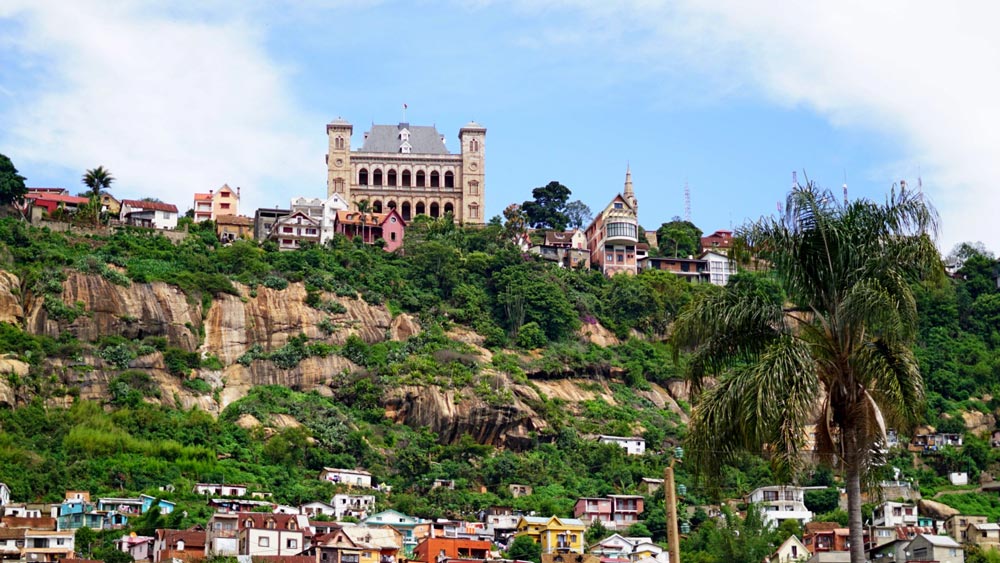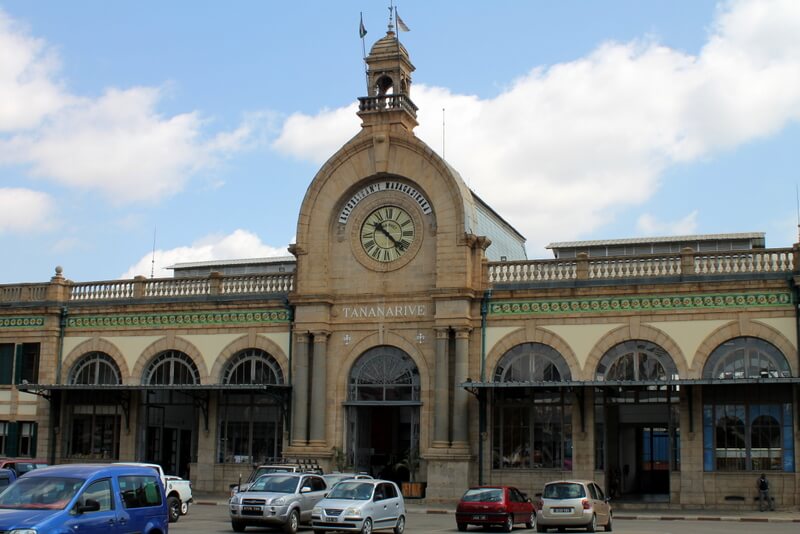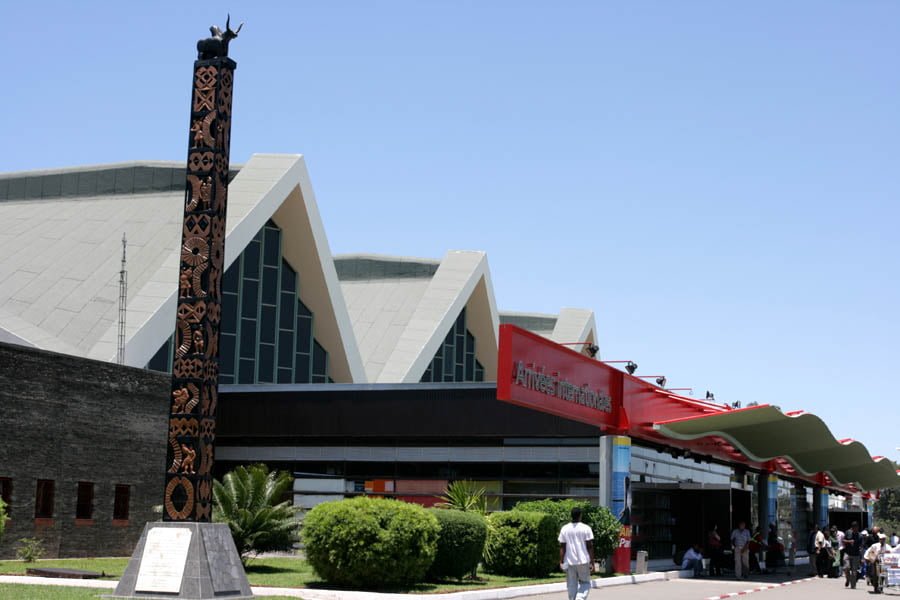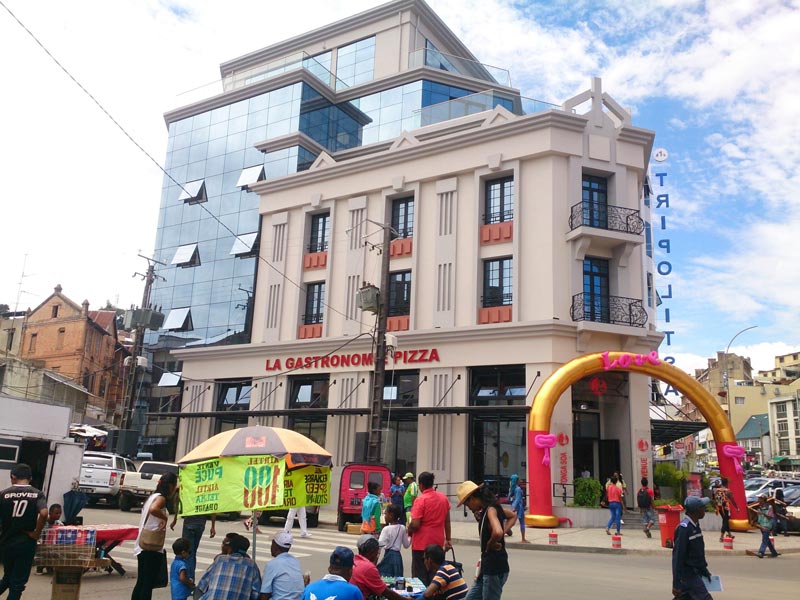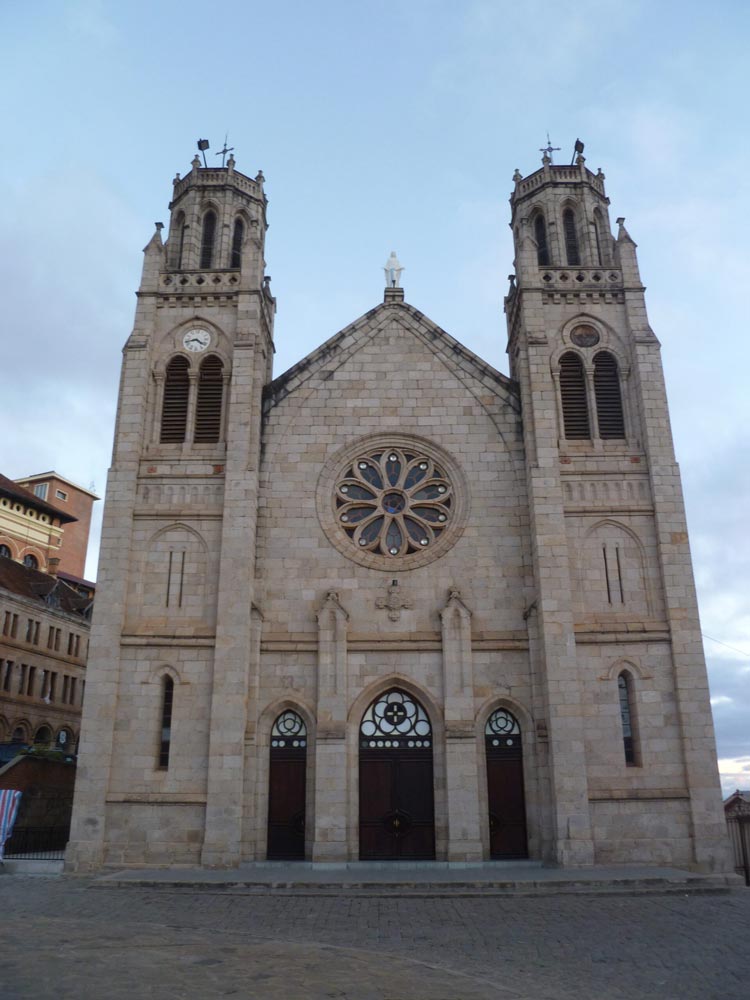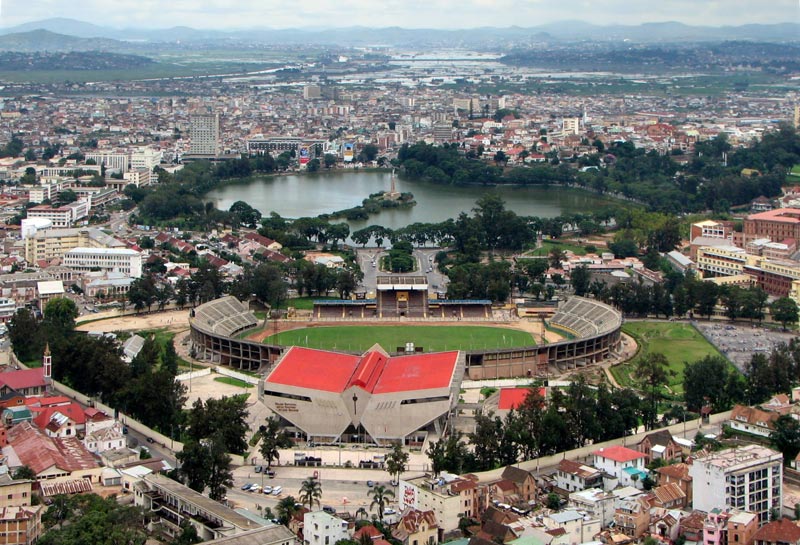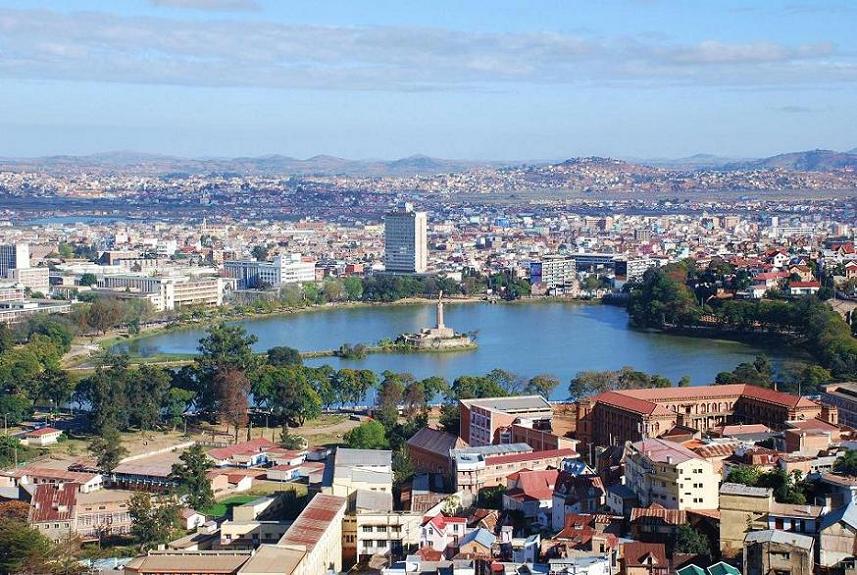Antananarivo
Antananarivo, also known by its colonial shorthand form Tana, is the capital and largest city of Madagascar. The administrative area of the city, known as Antananarivo-Renivohitra (“Antananarivo-Mother Hill” or “Antananarivo-Capital”), is the capital of Analamanga region. The city sits at 1,280 m (4,199 ft) above sea level in the center of the island, the highest national capital by elevation among the island countries. It has been the country’s largest population center since at least the 18th century. The presidency, National Assembly, Senate and Supreme Court are located there, as are 21 diplomatic missions and the headquarters of many national and international businesses and NGOs. It has more universities, nightclubs, art venues, and medical services than any city on the island.
Several national and local sports teams, including the championship-winning national rugby team, the Makis are based here.Antananarivo was historically the capital of the Merina people, who continue to form the majority of the city’s 1,275,207 inhabitants. The surrounding urban areas have a total metropolitan population approaching three million. All eighteen Malagasy ethnic groups, as well as residents of Chinese, Indian, European and other origins, are represented in the city. It was founded circa 1610, when the Merina King Andrianjaka (1612–1630) expelled the Vazimba inhabitants of the village of Analamanga. Declaring it the site of his capital, Andrianjaka built a rova (fortified royal dwelling) that expanded to become the royal palaces of the Kingdom of Imerina. The city retained the name Analamanga until the reign of King Andriamasinavalona (1675–1710), who renamed it Antananarivo (“City of the Thousand”) in honor of Andrianjaka’s soldiers.The city served as the capital of the Kingdom of Imerina until 1710 when Imerina split into four warring quadrants. Antananarivo became the capital of the southern quadrant until 1794, when King Andrianampoinimerina of Ambohimanga captured the province and restored it as the capital of a united Kingdom of Imerina, also bringing neighboring ethnic groups under Merina control.
These conquests continued under his son, Radama I, who eventually controlled over two-thirds of the island, leading him to be considered the King of Madagascar by European diplomats. Antananarivo remained the island’s capital after Madagascar was colonized by the French in 1897, and after independence in 1960. By the time Andrianampoinimerina’s son Radama I had ascended the throne upon his father’s death in 1810, Antananarivo was the largest and most economically important city on the island, with a population of over 80,000 inhabitants. Radama opened the city to the first European settlers, artisan missionaries of the London Missionary Society (LMS) who arrived in 1820 and opened the city’s first public schools. James Cameron introduced brickmaking to the island and created Lake Anosy to generate hydraulic power for industrial manufacturing. Radama established a military training ground on a flat plain called Mahamasina at the base of Analamanga near the lake. Radama’s subjugation of other Malagasy ethnic groups brought nearly two-thirds of the island under his control.
The British diplomats who concluded trade treaties with Radama recognized him as the “ruler of Madagascar”, a position he and his successors claimed despite never managing to impose their authority over the larger portion of the island’s south. Thereafter, Merina sovereigns declared Antananarivo the capital of the entire island. Under the Köppen-Geiger climate classification system, Antananarivo has a subtropical highland climate with dry season defined (Cwb) characterized by mild, dry winters and warm, rainy summers. The city receives nearly all of its average annual rainfall between November and April. Frosts are rare in the city; they are more common at higher elevations. Daily mean temperatures range from 20.8 °C (69.4 °F) in December to 14.3 °C (57.7 °F) in July. In Antananarivo and throughout the highlands, Merina and Betsileo families practice the famadihana, an ancestor reburial ceremony. This ceremony typically occurs five to seven years after the death of a relative and is celebrated by removing the relative’s lamba-wrapped remains from the family tomb, rewrapping it with fresh silk shrouds and returning it to the tomb. Relatives, friends, and neighbors are invited to take part in the music, dancing, and feasting that accompanies the event.
The famadihana is costly; many families sacrifice higher living standards to set aside money for the ceremony. The arts scene in Antananarivo is the largest and most vibrant in the country. Madagascar’s diverse music is reflected in the many concerts, cabarets, dance clubs, and other musical venues throughout Antananarivo. In the dry season, outdoor concerts are regularly held in venues including the Antsahamanitra amphitheater and Mahamasina Stadium. Concerts and nightclubs are attended mainly by young people of the middle to upper classes who can afford the entrance fees. More affordable are performances of traditional vakindrazana or Malagasy operettas at Isotry Theater and hira gasy at the city’s outdoor cheminots theater or Alliance française; these performances are more popular with older and rural audiences than among urban youth. Nightlife is the most animated in the ville moyenne neighborhoods of Antaninarenina, Tsaralalana, Behoririka, Mahamasina, and Andohalo The Palais des Sports in the Mahamasina neighborhood is the country’s only indoor performance space built to international standards. It was built in 1995 by the Government of China; it regularly hosts concerts, dance, and other arts performances, expositions, and novelty events like monster truck rallies.
The city lacks a dedicated classical music performance space, and concerts by international artists are infrequent. Performances of classical, jazz, and other foreign musical genres, modern and contemporary dance, theater, and other arts occur at cultural arts centers funded by foreign governments or private entities. Among the best-known of these is the Centre Culturel Albert Camus and Alliance française d’Antananarivo, both funded by the French government. the Cercle Germano-Malgache, a branch of the Goethe-Institut funded by the German government; The American Center is funded by the United States government. Antananarivo has two dedicated cinemas, the Rex and the Ritz, both of which were built in the colonial era. These venues do not show international releases but occasionally screen Malagasy films or are used for private events and religious services.Rugby Union is considered the national sport of Madagascar.
The national rugby team is nicknamed the Makis after the local word for the indigenous ring tailed lemur. The team trains and plays domestic matches at Maki Stadium in Antananarivo. Constructed in 2012, the stadium has a capacity of 15,000 and houses a gym and administrative offices for the team.Several soccer teams are based in Antananarivo; AS Adema Analamanga and Ajesaia are associated with the Analamanga region; USCA Foot is associated with the CUA and the AS Saint Michel has been affiliated since 1948 with the historic secondary school of the same name. All four teams train and play local games in Mahamasina Municipal Stadium, the largest sporting venue in the country. The men’s basketball teams Challenger and SOE (Équipe du Stade olympique de l’Emyrne) are based in Antananarivo and play in the Palais des Sports at Mahamasina.
Gallery
See also other city
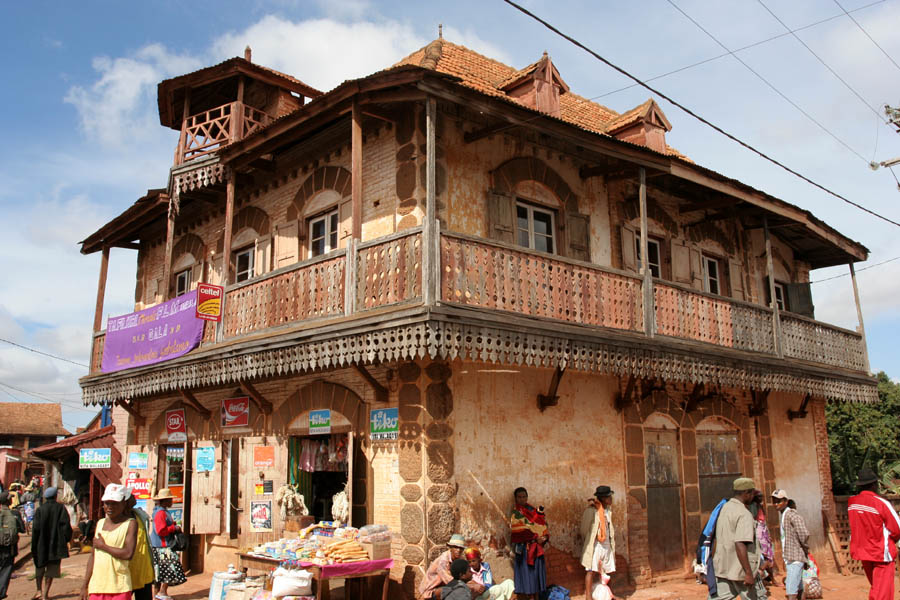
About fifty kilometers south of Fianarantsoa, Ambalavao is revealed timidly nestled between the granite mountains, dominated by the Andringitra massif and Boby Peak peaking at nearly 2,658 meters of altitude. This region marks the boundary between the Highlands and the southern part of Madagascar, represented by three rocky massifs designated as the gates of the […]
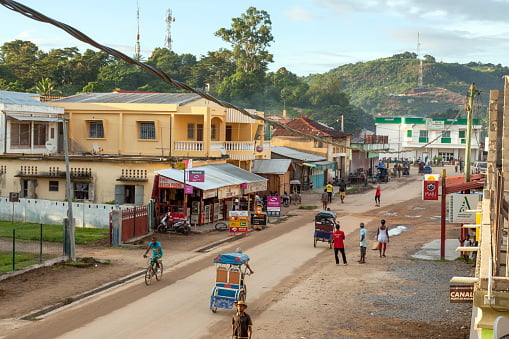
Ambanja is the capital town of the district by the same name in the northwest of Madagascar. The town is located along the beautiful Sambirano River, about 20 kilometres from the Mozambique Channel, southeast of Nosy Be island. Ambanja is the heart of the Sambirano region, which comprises the area along the course of the […]

Ambatoboeny is a town in north-western Madagascar in Boeny Region
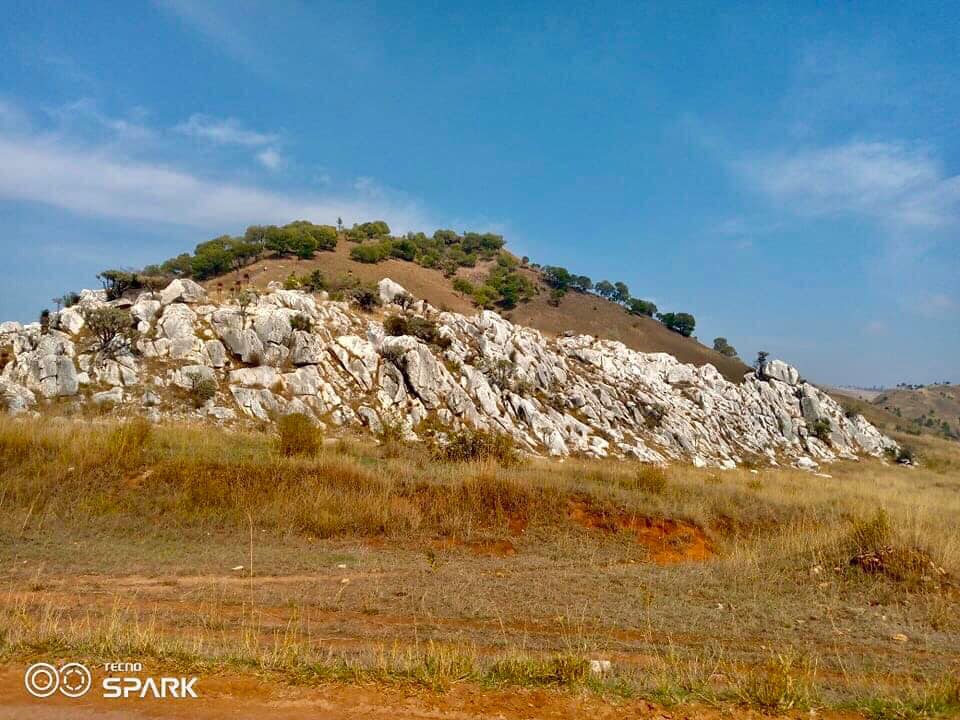
Ambatofinandrahana is a municipality in Ambatofinandrahana District in central Madagascar. It is a part of Amoron’i Mania region. his town lies at the Route nationale 35 from Morondava to Ivato at 67 km from Ivato. he protected area of the Massif d’Itremo. The only quartzite and marble quarries of Madagascar are found within 40km from […]



